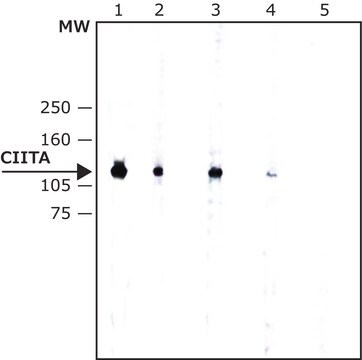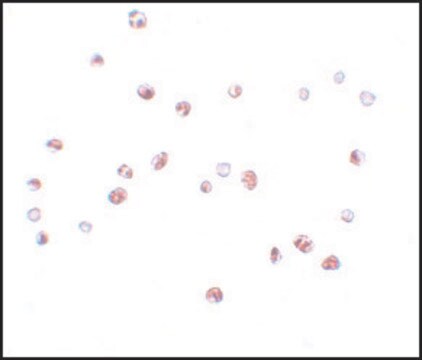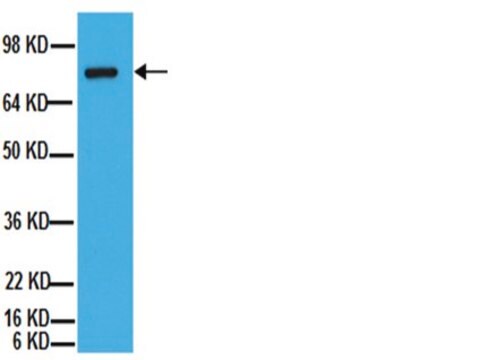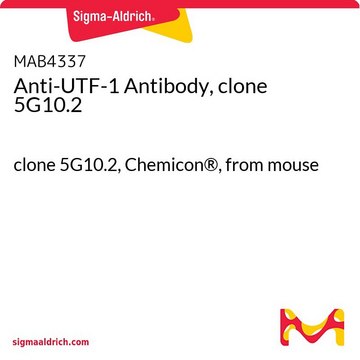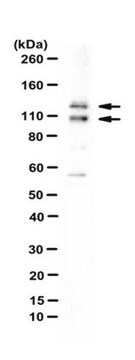MABF260
Anti-NLRC5 Antibody, clone 3H8
clone 3H8, from rat, purified by using protein G
Synonyme(s) :
Protein NLRC5, Caterpiller protein 16.1, CLR16.1, Nucleotide-binding oligomerization domain protein 27, Nucleotide-binding oligomerization domain protein 4
About This Item
Produits recommandés
Source biologique
rat
Niveau de qualité
Forme d'anticorps
purified antibody
Type de produit anticorps
primary antibodies
Clone
3H8, monoclonal
Produit purifié par
using protein G
Espèces réactives
human
Technique(s)
flow cytometry: suitable
immunoprecipitation (IP): suitable
western blot: suitable
Isotype
IgG1, kappa
Numéro d'accès UniProt
Conditions d'expédition
wet ice
Modification post-traductionnelle de la cible
unmodified
Informations sur le gène
human ... NLRC5(84166)
Description générale
Spécificité
Immunogène
Application
A representative lot detected poly(I:C) (Cat. No. 528906) treatment-induced upregulation of endogenous NLRC5 in HeLa cells by IP-Western blotting analysis of both cytosolic and nuclear fractions. A strong NLRC5 nuclear accumulation was seen upon nuclear export inhibition by LepB (Cat. No. 431050) treatment, whereas NLRC5 was mainly cytoplasmic in untreated cells (Neerincx, A., et al. (2012).
A representative lot detected NLRC5 in THP-1 cell lysate as well as exogenously expressed FLAG-tagged NLRC5 in lysate from transfected HEK293T cells. Target band detection was greatly diminished using lysates from NLRC5 siRNA-transfected THP-1 cells. (Neerincx, A., et al. (2010). J. Biol. Chem. 285(34):26223-26232).
Inflammation et immunologie
Immunoglobulines et immunologie
Qualité
Analyse par western blotting : µµ
Description de la cible
Forme physique
Stockage et stabilité
Autres remarques
Clause de non-responsabilité
Vous ne trouvez pas le bon produit ?
Essayez notre Outil de sélection de produits.
Code de la classe de stockage
12 - Non Combustible Liquids
Classe de danger pour l'eau (WGK)
WGK 1
Point d'éclair (°F)
Not applicable
Point d'éclair (°C)
Not applicable
Certificats d'analyse (COA)
Recherchez un Certificats d'analyse (COA) en saisissant le numéro de lot du produit. Les numéros de lot figurent sur l'étiquette du produit après les mots "Lot" ou "Batch".
Déjà en possession de ce produit ?
Retrouvez la documentation relative aux produits que vous avez récemment achetés dans la Bibliothèque de documents.
Notre équipe de scientifiques dispose d'une expérience dans tous les secteurs de la recherche, notamment en sciences de la vie, science des matériaux, synthèse chimique, chromatographie, analyse et dans de nombreux autres domaines..
Contacter notre Service technique
